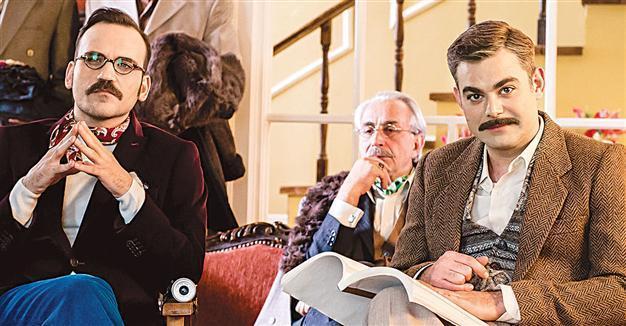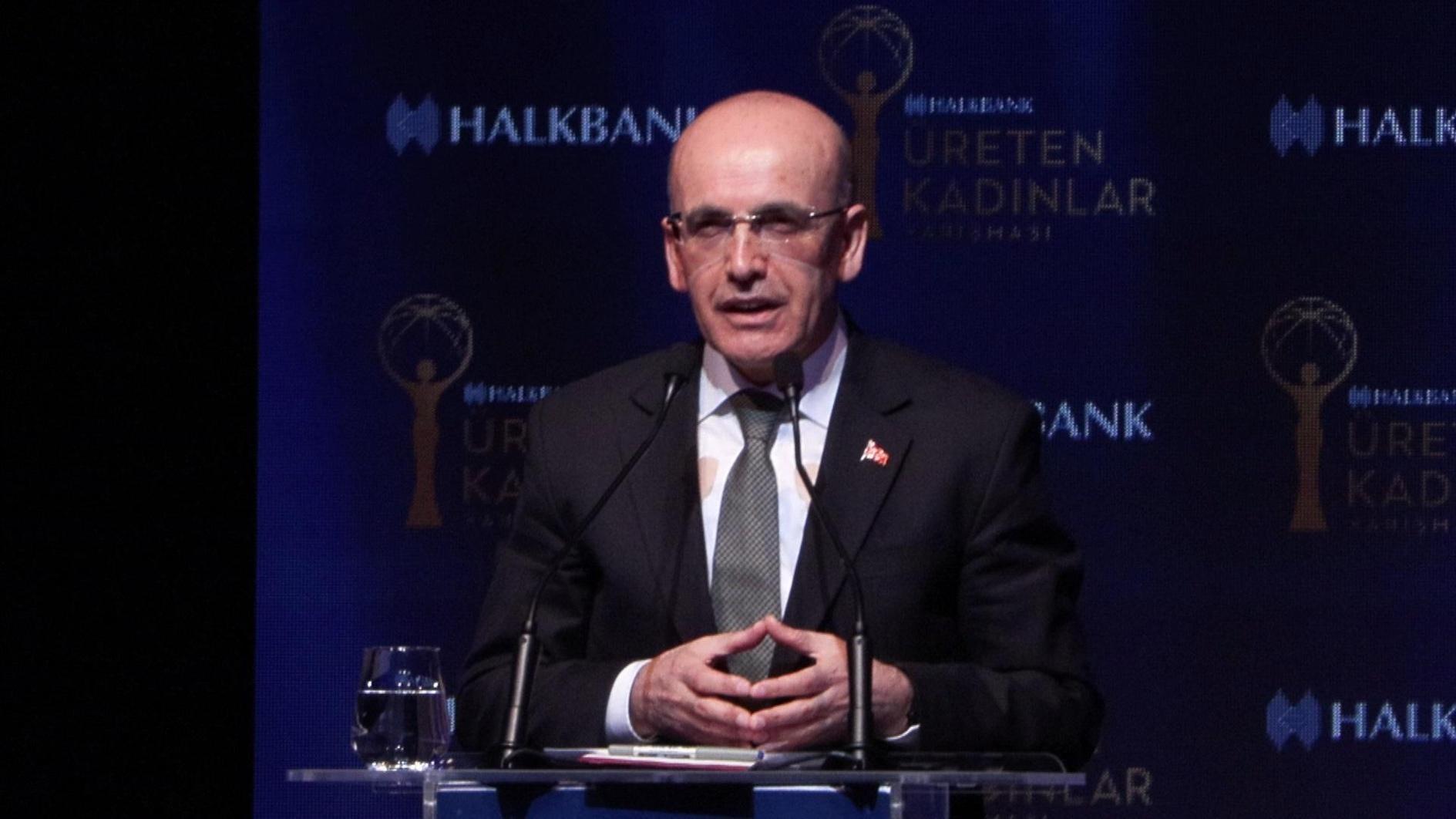Film looks at filmmaking in 1960's Turkey
Emrah GÜLER
 ‘Müthiş Bir Film,’ a love letter to filmmaking, a nostalgic and comedic look at the film industry half a century ago in Turkey, takes place in the 1960s, following two friends’ quest to fulfill their childhood fantasy of making a film.
‘Müthiş Bir Film,’ a love letter to filmmaking, a nostalgic and comedic look at the film industry half a century ago in Turkey, takes place in the 1960s, following two friends’ quest to fulfill their childhood fantasy of making a film.Many filmgoers might not have heard the name Emir Khalilzadeh, but they definitely are familiar with his work. He is a prolific director of many commercials and music videos. Phone operator Turkcell’s Muhabber Kart commercials with popular 1990s singer Mustafa Sandal or the video for pop singer Hadise’s hit summer single “Deli Oğlan” (Crazy Boy) are a few examples of Khalilzadeh’s work.
He is also the director of last year’s “Çılgın Kamp” (The Crazy Camp), the low-profile children’s adventure film co-directed with Aram Gülyüz. This week sees many Turkish films taking screen time, kickstarting the cinema’s fall season. One of the new releases is Khalilzadeh’s sophomore feature “Müthiş Bir Film” (An Incredible Movie), starring an ensemble cast of big names from cinema and TV.
“Müthiş Bir Film” is a love letter to filmmaking, a nostalgic and comedic look at the film industry half a century ago in Turkey. The film industry from the 1950s to 1970s was synonymous with the street in Istanbul where most of the studios and crews were based, Yeşilçam Street. As many as 350 films would be made during the heydays of Turkish cinema’s Yeşilçam era.
The film takes place in the 1960s, following two friends’ quest to fulfill their childhood fantasy of making a film. As the two embark on a journey into Yeşilçam, things turn out to be more complicated than they had fantasized. The recreation of Yeşilçam and the Turkish film industry five decades back is mostly a fictional place, albeit a colorful one, thanks to Khalilzadeh’s craft in commercials and videos.
Odes to filmmaking in the 2000s
“Müthiş Bir Film” will remind followers of Turkish cinema of late director Ahmet Uluçay’s debut feature of 2004, “Karpuz Kabuğundan Gemiler Yapmak” (Boats Out of Watermelon Rinds). Set in Uluçay’s childhood village in the Aegean region, the film is a coming-of-age story, a heartwarming take on the passion of cinema through the eyes of two young boys in the 1960s.
One working for a watermelon vendor and the other for a barber, the two boys take a foray into filmmaking by collecting disposed films from the local movie theater, in an attempt to screen them on a wall through the projector they build. With no electricity in the village, the two use a generator to the amusement of the villagers. “Karpuz Kabuğundan Gemiler Yapmak” is based loosely on Uluçay’s own childhood.
Uluçay’s debut feature was one of the many films that hit the screens in the 2000s that took the audience behind the scenes, telling stories on films and filmmaking. Directors Emre Akay’s and Hasan Yalaz’s 2007 film “Bir Tuğra Kaftancıoğlu Filmi” (A Tuğra Kaftancıoğlu Film) continues to generate discussion to this date, with its solid cult followers.
Shot with documentary-style realism, blurring fiction and reality, the film follows aspiring and actual filmmakers secretly watching others, who in turn, are watching others secretly. At the center of “Bir Tuğra Kaftancıoğlu Filmi” is the titular character, the director with no boundaries, making the film a uniquely compelling watch.
Dostoyevsky and Tarkovsky
Another fictional director from a memorable film on filmmaking is the leading character of acclaimed director Zeki Demirkubuz’s 2003 film “Bekleme Odası” (The Waiting Room), the final film in the auteur’s “The Tales of Darkness” trilogy. Credited as director, writer, producer, cinematographer and editor, Demirkubuz takes the leading role as well, as the depressed director hoping to adapt Dostoyevsky’s “Crime and Punishment.”
The film creates alternate realities, blending into one another as the director isolates himself from everyday life, hopelessly trying to inhabit the novel he is trying to make his own on screen. As the name of the trilogy and the novel in question implies, the film is a darker look at a filmmaker’s quest to create.
A recent example on a filmmaker’s quest to create was Murat Düzgünoğlu’s “Neden Tarkovski Olamıyorum…” (Why Can’t I Be Tarkovsky?) from 2014.
The film follows a young director of TV shows and commercials, and his obsession to become like his idol, the legendary Soviet/Russian filmmaker Andrei Tarkovsky, so much so that the protagonist dreams of himself as the protagonist in the opening scene of Tarkovsky’s “Stalker.”
Filmmaking and filmmakers continue to peer through the screen.
He is also the director of last year’s “Çılgın Kamp” (The Crazy Camp), the low-profile children’s adventure film co-directed with Aram Gülyüz. This week sees many Turkish films taking screen time, kickstarting the cinema’s fall season. One of the new releases is Khalilzadeh’s sophomore feature “Müthiş Bir Film” (An Incredible Movie), starring an ensemble cast of big names from cinema and TV.
“Müthiş Bir Film” is a love letter to filmmaking, a nostalgic and comedic look at the film industry half a century ago in Turkey. The film industry from the 1950s to 1970s was synonymous with the street in Istanbul where most of the studios and crews were based, Yeşilçam Street. As many as 350 films would be made during the heydays of Turkish cinema’s Yeşilçam era.
The film takes place in the 1960s, following two friends’ quest to fulfill their childhood fantasy of making a film. As the two embark on a journey into Yeşilçam, things turn out to be more complicated than they had fantasized. The recreation of Yeşilçam and the Turkish film industry five decades back is mostly a fictional place, albeit a colorful one, thanks to Khalilzadeh’s craft in commercials and videos.
Odes to filmmaking in the 2000s
“Müthiş Bir Film” will remind followers of Turkish cinema of late director Ahmet Uluçay’s debut feature of 2004, “Karpuz Kabuğundan Gemiler Yapmak” (Boats Out of Watermelon Rinds). Set in Uluçay’s childhood village in the Aegean region, the film is a coming-of-age story, a heartwarming take on the passion of cinema through the eyes of two young boys in the 1960s.
One working for a watermelon vendor and the other for a barber, the two boys take a foray into filmmaking by collecting disposed films from the local movie theater, in an attempt to screen them on a wall through the projector they build. With no electricity in the village, the two use a generator to the amusement of the villagers. “Karpuz Kabuğundan Gemiler Yapmak” is based loosely on Uluçay’s own childhood.
Uluçay’s debut feature was one of the many films that hit the screens in the 2000s that took the audience behind the scenes, telling stories on films and filmmaking. Directors Emre Akay’s and Hasan Yalaz’s 2007 film “Bir Tuğra Kaftancıoğlu Filmi” (A Tuğra Kaftancıoğlu Film) continues to generate discussion to this date, with its solid cult followers.
Shot with documentary-style realism, blurring fiction and reality, the film follows aspiring and actual filmmakers secretly watching others, who in turn, are watching others secretly. At the center of “Bir Tuğra Kaftancıoğlu Filmi” is the titular character, the director with no boundaries, making the film a uniquely compelling watch.
Dostoyevsky and Tarkovsky
Another fictional director from a memorable film on filmmaking is the leading character of acclaimed director Zeki Demirkubuz’s 2003 film “Bekleme Odası” (The Waiting Room), the final film in the auteur’s “The Tales of Darkness” trilogy. Credited as director, writer, producer, cinematographer and editor, Demirkubuz takes the leading role as well, as the depressed director hoping to adapt Dostoyevsky’s “Crime and Punishment.”
The film creates alternate realities, blending into one another as the director isolates himself from everyday life, hopelessly trying to inhabit the novel he is trying to make his own on screen. As the name of the trilogy and the novel in question implies, the film is a darker look at a filmmaker’s quest to create.
A recent example on a filmmaker’s quest to create was Murat Düzgünoğlu’s “Neden Tarkovski Olamıyorum…” (Why Can’t I Be Tarkovsky?) from 2014.
The film follows a young director of TV shows and commercials, and his obsession to become like his idol, the legendary Soviet/Russian filmmaker Andrei Tarkovsky, so much so that the protagonist dreams of himself as the protagonist in the opening scene of Tarkovsky’s “Stalker.”
Filmmaking and filmmakers continue to peer through the screen.
















